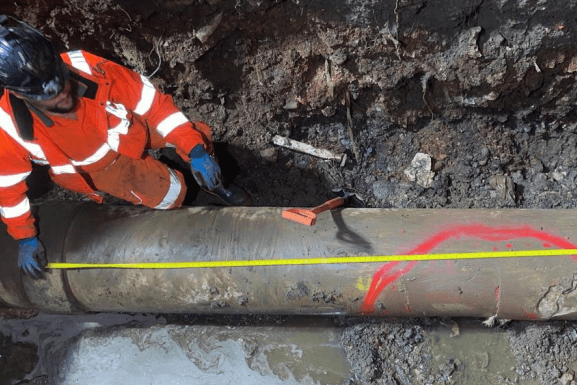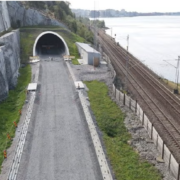
In order to decreasing pipe bursts in Swindon, which includes the replacement of the 3km Haydon End Rising Main and £16M costs, Thames Water has begun the work.
Replacing process of the full length of the 3km Haydon End Rising Main with aim of creating a new route to help prevent future pipe bursts, is up to Thames Water and its contractor Barhale.
Considering that on 1995-96 Haydon End Rising Main and the sewage pumping station were built to transfer sewage to the inlet works at the western end of the Swindon sewage treatment works, the population in the area that the pipe serves has grown remarkably since that time.
While the pipe has faced several bursts in recent two years, due to the scattered nature of the bursts a full-length replacement of the pipe is required.
The planned date for completion of this project is July 2024, whereas it is divided into multiple dig sites and is.
Barhale is going to oversee 630mm diameter polyethylene pipework laid offline along the new route through a combination of tunneling, 1,500m of 1,200mm pipe jack, 330m of directional drilling, and an additional 1,800m of open cut excavation.
Stretching from the Haydon End sewage pumping station to the north of the railway track, the first section of the scheme will be excavated to minimize impact to the local environment.
Currently being used as a footpath and cycleway, the second section is due to be the open cut installation following the route of the old railway line. This section crosses the river Ray near Barnfield Road, where it will be drilled underneath the watercourse and finally the last section will be at the sewage treatment works, off Barnfield Road.
As the advantages of this replacement rising main it is expected to bring wider resilience to the area and surrounding environment, while in order to improving the local cycle networks after the work is completed, Thames Water is also working with Swindon Borough Council.
According to Thames Water’s Thames Valley Region head of waste treatment Andrew Scott: “We recognise the disruption recent bursts from this pipe have caused and the impact it has had on customers. That’s why we brought forward our plans to start this £16M project now so we can ensure our network in the area is resilient to the pressures of climate change and population growth, and we can provide a reliable service to our customers.”
“The sewage leaks in North Swindon have caused disruption to local wildlife and residents in Taw Hill so I’m really pleased Thames Water is making this significant investment in its infrastructure to benefit the town. We have been working closely with Thames Water to facilitate the work and, because the new pipe will be going underneath the existing cycle path, we have agreed that the route is improved when the path is put back in place, which is great news for cyclists and pedestrians who use it,” added Swindon Borough Council’s cabinet member for the environment and transport, councilor Chris Watts.
















